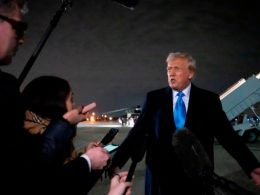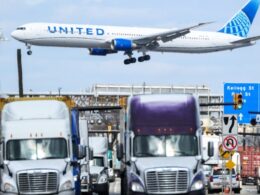Unlock the White House Watch newsletter for free
Your guide to what the 2024 US election means for Washington and the world
It is time to retire the phrase: “When America sneezes, the rest of the world catches a cold.” Said to have first been used in relation to Napoleonic France, that idiom lost its value after Waterloo. Donald Trump is about to destroy its modern equivalent.
In foreign policy, the president’s choice no longer to be a reliable ally providing trusted security guarantees is a seismic change. It ensures that other countries will now be less willing to accept US demands. But it is on the economic front that hubris is most likely to result in humility for a country that has long since lost its status as the world’s largest producer of goods and services.
It is not just that Trump’s negotiating hand with tariffs is much weaker than he imagines. It is that the rest of the world controls 85 per cent of the global economy and no longer has to follow whatever the US does. Provided cool heads prevail in global commerce, the hotheads in the White House will not dominate the landscape. This century, America’s share of global goods imports has fallen from 19 per cent to 13 per cent, according to World Bank figures.
These figures probably understate the country’s true importance because imports and exports along supply chains often end up as US final demand (for example, if Chinese batteries are supplied to European electric vehicles and bought by Americans), but its share of global commerce is undoubtedly falling.
The White House might seek to generate a sense of global economic dominance, bringing other countries into line for fear of the consequences. But what this century has taught us is that few crises are actually global.
For sure, few economies emerged from the global financial crisis or the Covid pandemic unscathed. But there have been many more localised economic crises that did not infect the rest of the world. Brexit and the Liz Truss episode were confined to the UK. The Eurozone bore the vast brunt of its 2010-12 sovereign debt crisis. Europe alone suffered from natural gas shortages and price surges in the wake of Russia’s invasion of Ukraine. Globalisation is far from complete.
The US is a sovereign nation and free to destroy its part in the global economic rules-based system it created. But in setting high tariffs and flip-flopping on them, spreading fear among immigrants and undermining the effectiveness of the US government, the policies will hit hardest at home.
The stagflationary shock of generating huge business uncertainties and higher imported goods prices puts the Federal Reserve in a bind. It is struggling to articulate whether to worry more about higher unemployment or rising prices. But the inflationary effects of Trump’s tariffs hit mostly in the US. Other countries facing a demand shock can simply offset this with looser policy.
Of course, there will be some collateral damage. Countries with high export shares in GDP and with the US as a very large trading partner — think Canada and Mexico — are more vulnerable. Smaller economies that export food and basic goods such as T-shirts to America are also likely to be hit hard.
But when economists calibrate their models and look at the underlying realities, it is the US that looks weak. Consensus Economics, which collates private-sector forecasts, shows that economists on average expect the US economy to grow almost a percentage point less in 2025 than at the time of Trump’s inauguration, and 2026 does not look much better. Eurozone and Chinese GDP forecasts have been trimmed by far less.
This week, finance ministers and central bank governors will convene in Washington for the IMF and World Bank spring meetings. There is often one country at such gatherings that has earned pariah status. No doubt fingers will point at the US this year. The only question is how polite other countries choose to be. But America’s economic problems are its own. When it shoots itself in the foot, it is the US that will be bleeding.
Source link









